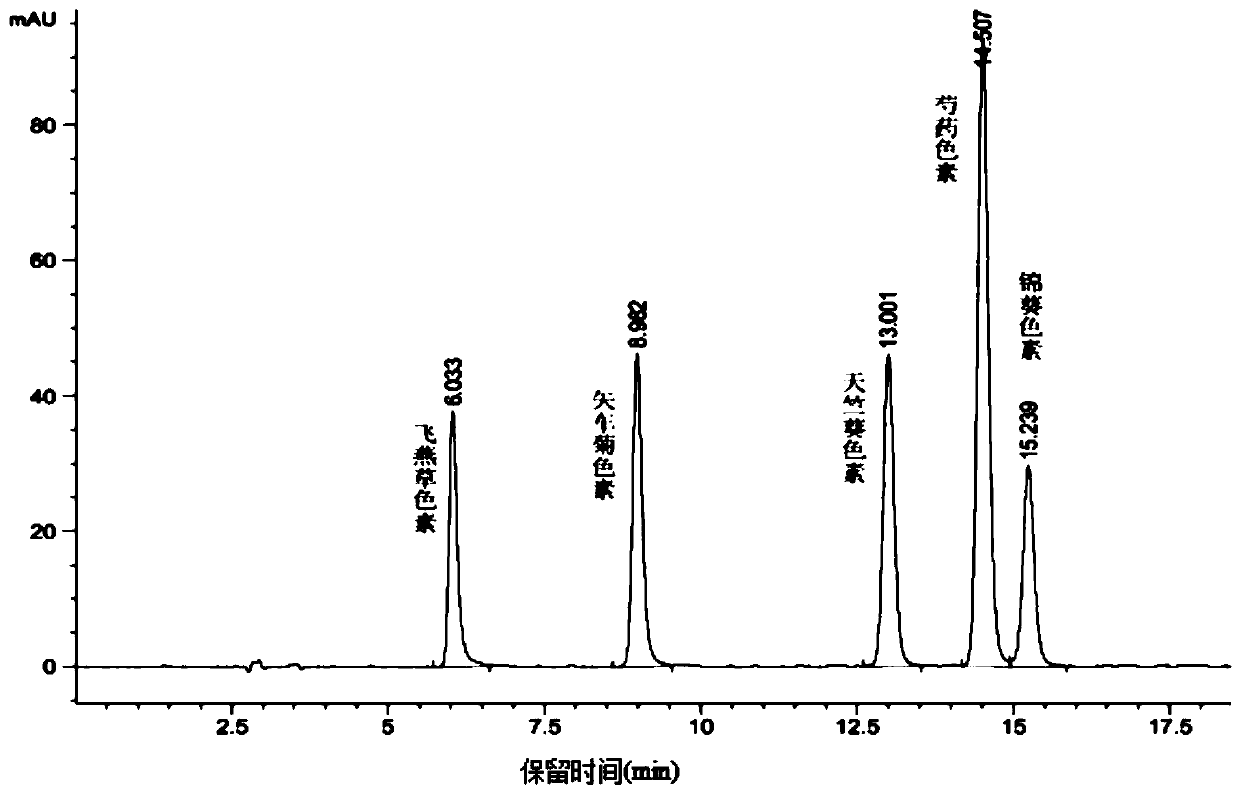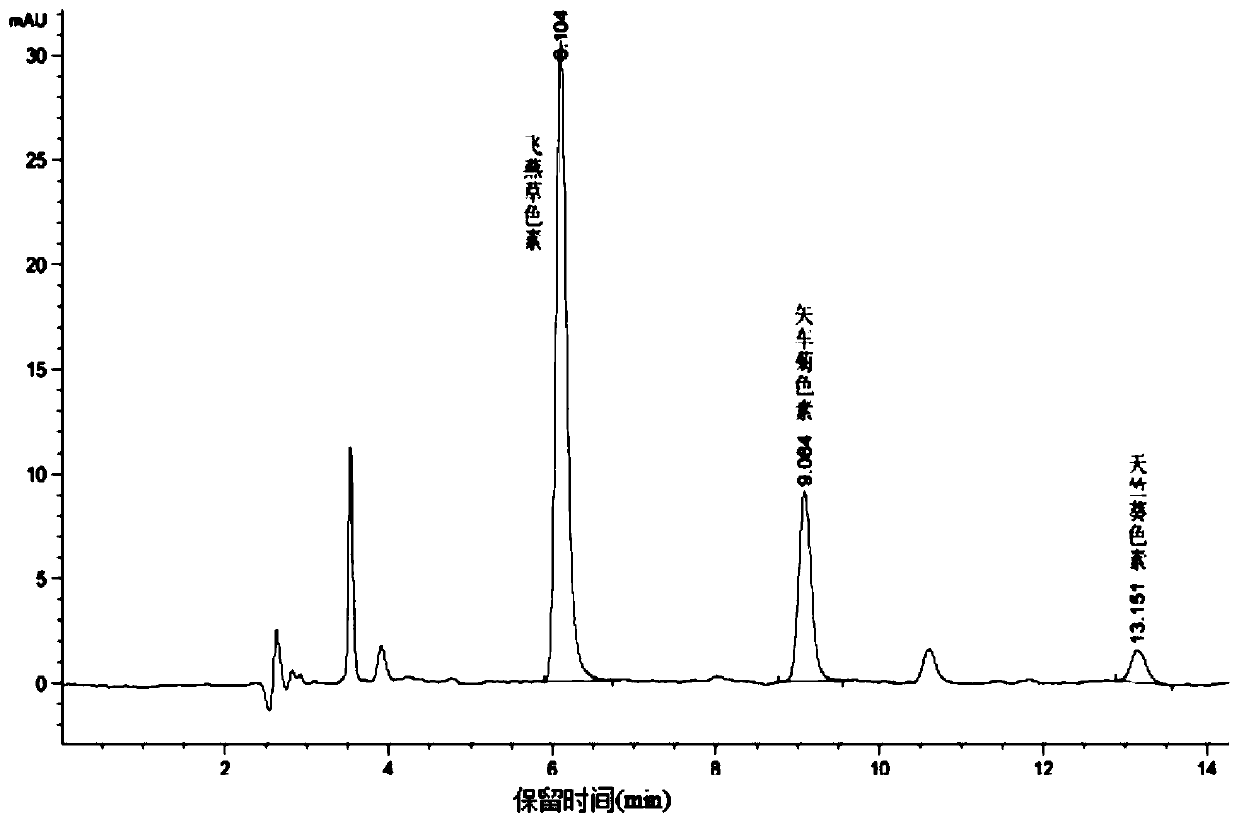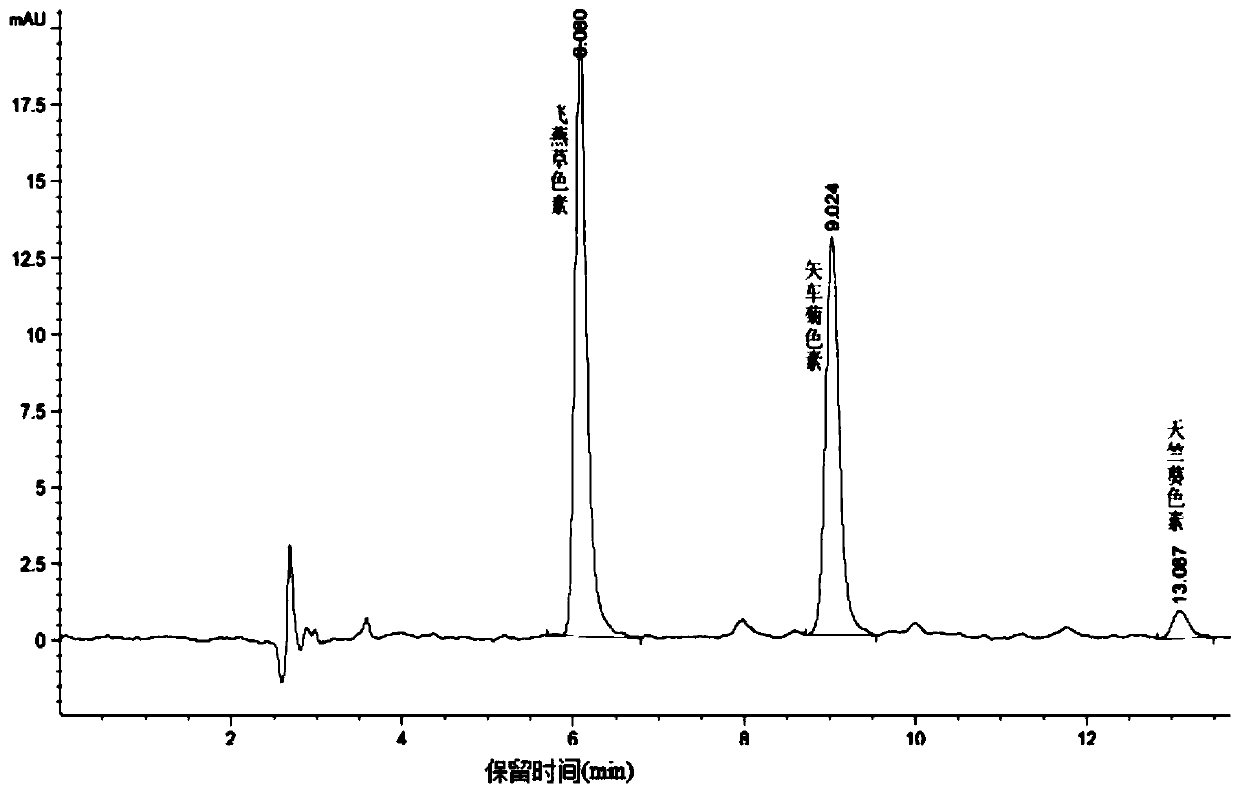Method for extracting anthocyanin from fresh tea leaves
A technology for anthocyanin and fresh tea leaves is applied in the field of natural medicine extraction, which can solve the problems of low purity and low extraction efficiency, and achieve the effects of high extraction efficiency, good reproducibility, and large-scale industrial application.
- Summary
- Abstract
- Description
- Claims
- Application Information
AI Technical Summary
Problems solved by technology
Method used
Image
Examples
Embodiment 1
[0041] A method for extracting anthocyanins from fresh tea leaves, comprising the following steps:
[0042] S1: Accurately weigh 5g of "Ziyan" tea tree fresh leaves and add them to a pre-cooled mortar, then add liquid nitrogen for quick grinding; then transfer the ground tea leaves to a beaker, and add 40mL of them to a concentration of 0.4g / mL citric acid solution, after mixing to obtain a slurry;
[0043]S2: Weigh 1g of cellulase, 0.5g of pectinase and 0.3g of tannase, and mix them evenly to obtain mixed enzyme; weigh 180mg of mixed enzyme, and add it to the slurry, stir the slurry evenly Transfer to an ultrasonic reactor, perform ultrasonic enzymolysis at 37°C for 60 minutes, and control the ultrasonic frequency at about 45 kHz; then filter with cation exchange resin coated with montmorillonite, and collect the filtrate;
[0044] S3: Mix the filtrate with 1% HCl-MeOH solution at a volume ratio of 1:1.5, extract at 0°C for 2 hours, then centrifuge to collect the supernatant...
Embodiment 2
[0048] A method for extracting anthocyanins from fresh tea leaves, comprising the following steps:
[0049] S1: Accurately weigh 5g of "Zijuan" tea tree fresh leaves and add them to a pre-cooled mortar, then add liquid nitrogen to quickly grind; then transfer the ground tea leaves to a beaker, and add 50mL of them to a concentration of 0.1g / mL citric acid solution, after mixing to obtain a slurry;
[0050] S2: Weigh 1g of cellulase, 0.4g of pectinase and 0.5g of tannase, and mix them evenly to obtain mixed enzyme; weigh 275mg of mixed enzyme, and add it to the slurry, stir the slurry evenly Transfer to an ultrasonic reactor, perform ultrasonic enzymolysis at 40°C for 45 minutes, and control the ultrasonic frequency at about 50 kHz; then filter with cation exchange resin coated with montmorillonite, and collect the filtrate;
[0051] S3: Mix the filtrate with 1% HCl-MeOH solution at a volume ratio of 1:1.5, extract at 2°C for 2 hours, then centrifuge to collect the supernatant...
Embodiment 3
[0055] A method for extracting anthocyanins from fresh tea leaves, comprising the following steps:
[0056] S1: Accurately weigh 5g of "Ziyan" fresh tea leaves and add them to a pre-cooled mortar, then add liquid nitrogen to quickly grind; then transfer the ground tea leaves to a beaker, and add 25mL of 0.5g / mL Citric acid solution, get slurry after mixing;
[0057] S2: Weigh 1g of cellulase, 0.4g of pectinase and 0.5g of tannase, and mix them uniformly to obtain mixed enzyme; weigh 60mg of mixed enzyme, and add it to the slurry, stir the slurry evenly Transfer to an ultrasonic reactor for enzymatic hydrolysis at 37°C for 45 minutes; then filter with a cation exchange resin coated with montmorillonite, and collect the filtrate;
[0058] S3: Mix the filtrate with 1% HCl-MeOH solution at a volume ratio of 1:1.5, extract at 0°C for 3 hours, then centrifuge to collect the supernatant; then mix the resulting supernatant with 1% HCl-MeOH The solution was mixed at a volume ratio of...
PUM
| Property | Measurement | Unit |
|---|---|---|
| concentration | aaaaa | aaaaa |
| concentration | aaaaa | aaaaa |
| concentration | aaaaa | aaaaa |
Abstract
Description
Claims
Application Information
 Login to View More
Login to View More - R&D
- Intellectual Property
- Life Sciences
- Materials
- Tech Scout
- Unparalleled Data Quality
- Higher Quality Content
- 60% Fewer Hallucinations
Browse by: Latest US Patents, China's latest patents, Technical Efficacy Thesaurus, Application Domain, Technology Topic, Popular Technical Reports.
© 2025 PatSnap. All rights reserved.Legal|Privacy policy|Modern Slavery Act Transparency Statement|Sitemap|About US| Contact US: help@patsnap.com



